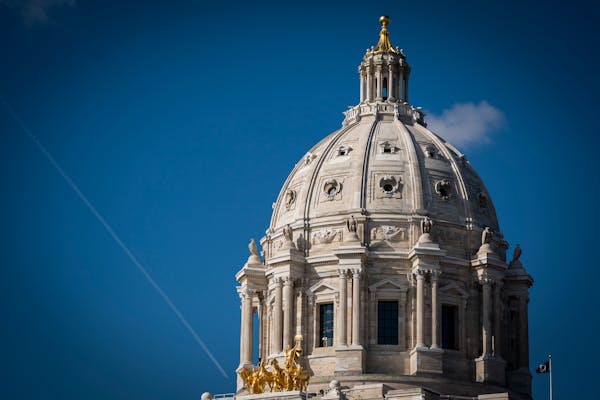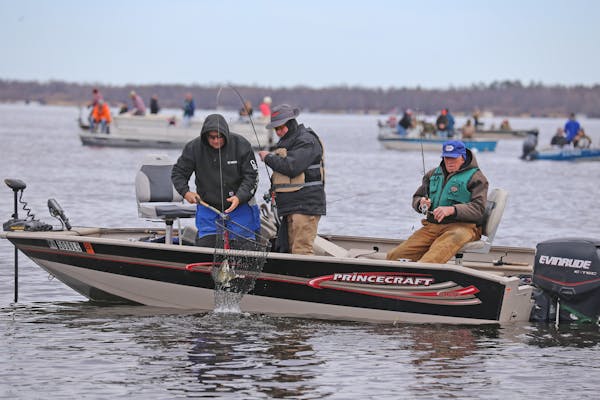However misplaced my faith, I have often believed I could beat the system, any system, which is why I buy the occasional lottery ticket. Other Minnesotans apparently view the world similarly: In 2021, the state lottery had another record year, with $803.6 million in sales.
Wouldn't it be nice if legislators didn't misappropriate profits from those ticket sales, which are supposed to enhance Minnesota's environment?
Nice.
But don't count on it.
And don't count on Gov. Tim Walz to draw the line on the Legislature's proclivity to dip its sticky fingers into lottery proceeds: On Wednesday, the governor's sidekicks spread the word he intends to sign the consummately flawed bill that distributes millions from the Environment and Natural Resources Trust Fund (ENRTF), which the lottery underwrites and whose purpose is to make Minnesota a better place to live.
Established by voter approval of a constitutional amendment in 1988, the ENRTF's intent is to expend lottery money for the public purpose of "protection, conservation, preservation, and enhancement of the state's air, water, land, fish, wildlife, and other natural resources.''
Sounds wholesome.
But its successful application requires that stewards of the fund be individuals for whom trust and honor are more valued than dealmaking, a distinction that doesn't universally apply to the 201 legislators who descend on the Capitol for a few months each year.
Here's how lottery profits are supposed to be distributed:
• Prospective conservation projects are submitted to the Legislative-Citizen Commission on Minnesota Resources (LCCMR) for review. The council comprises 10 legislators and seven citizens.
• From the proposed projects, the council prioritizes how to spend the annual ENRTF appropriation, which this year was about $70 million.
Sounds straightforward. But problems arise when legislators on the council insert home-district pork into the project list — sometimes acknowledging as much in council meetings by asking fellow members to vote for a project "because it's in my legislative district.''
Though citizens serving on the LCCMR find such pocket-lining objectionable, there's little they can do but complain.
So egregious were Senate Republican legislators this year with lottery money that they inserted 12 projects into the final ENRTF bill that hadn't been submitted to the LCCMR for consideration, much less its recommendation (or not) to the Legislature for funding.
One would have hoped DFLers on the conference committee assigned to resolve differences between the House and Senate ENRTF bills would have summoned sufficient backbone to nix the 12 projects that bypassed the LCCMR, arguing that their inclusion undermined the veracity of the bill and the process that developed it.
Instead, House conferees joined their Republican counterparts to approve the Dirty Dozen projects (reduced from an original list of 19, to DFL conferees' credit) while conferees from both parties joined to mysteriously kill funding for a handful of projects that previously had been included in the bill.
All of which is why some Minnesota conservationists, including citizen members of the LCCMR, want Walz to line-item veto the 12 projects from the bill, an action Gov. Mark Dayton took previously under similar circumstances.
An equally good idea would be for the governor to veto the bill altogether.
Were the governor to do the latter, some $60 million of largely worthwhile projects that were reviewed by the LCCMR would go unfunded this year, many of them in rural Minnesota, where Walz could use political support.
But the larger issue is the integrity of the process by which ENRTF money is distributed; integrity that, even if only by implication, was promised to Minnesotans when 77% of those who went to the polls in 1988 voted "Yes'' to the lottery and the conservation-enhancing proceeds it would generate.
A couple of decades back, Gov. Tim Pawlenty grew tired of the self-dealing that was rampant under the Legislative Commission on Minnesota Resources (LCMR), forerunner to the LCCMR. A commission he formed, co-chaired by Dave Zentner of Duluth, representing citizens, and Rep. Loren Solberg, DFL-Bovey, representing legislators, came up with the present-day LCCMR composition — Zentner's objections notwithstanding.
"I started out saying all 17 members should be citizens,'' Zentner said. "He (Solberg) wouldn't budge, and finally I said I'd go 50-50, citizens to legislators. Finally, I got beat down and we ended up with the 10-7 split, with legislators in the majority. I was told if I didn't like it, I should get elected to the Legislature and change it.''
The 10-7 division, legislators to citizens, would sufficiently ensure the legitimacy of the ENRTF-awarding process, if goodwill prevailed among legislators.
Because that's not the case, as was proven again this legislative session, voters might extinguish the lottery and/or the ENRTF when they come up for renewal in November 2023 or 2024, assuming legislators put those re-authorization questions on the ballot in one of those years.
To avoid such a conservation catastrophe — and it would be that for Minnesota — Walz should establish a commission to recast the LCCMR in the image of the Lessard-Sams Outdoor Heritage Council (LSOHC).
Made up of eight citizens and four legislators, the LSOHC recommends conservation and environment expenditures from the $150 million Outdoor Heritage Fund, which was established in 2008 by passage of the Clean Water, Land and Legacy Amendment.
The LSOHC model minimizes the role politics plays in its decision-making, a key advantage over the design of the LCCMR.
Whether legislators will agree to reduce their representation on a reformed lottery-money oversight panel is questionable.
If the citizenry demands it, and if Walz pushes them, possibly.
If they don't, and he doesn't, probably not.
Anderson: He paddled solo into the BWCAW and didn't come back

Anderson: In early June, Minnesota fish are begging to be caught. Won't you help?



